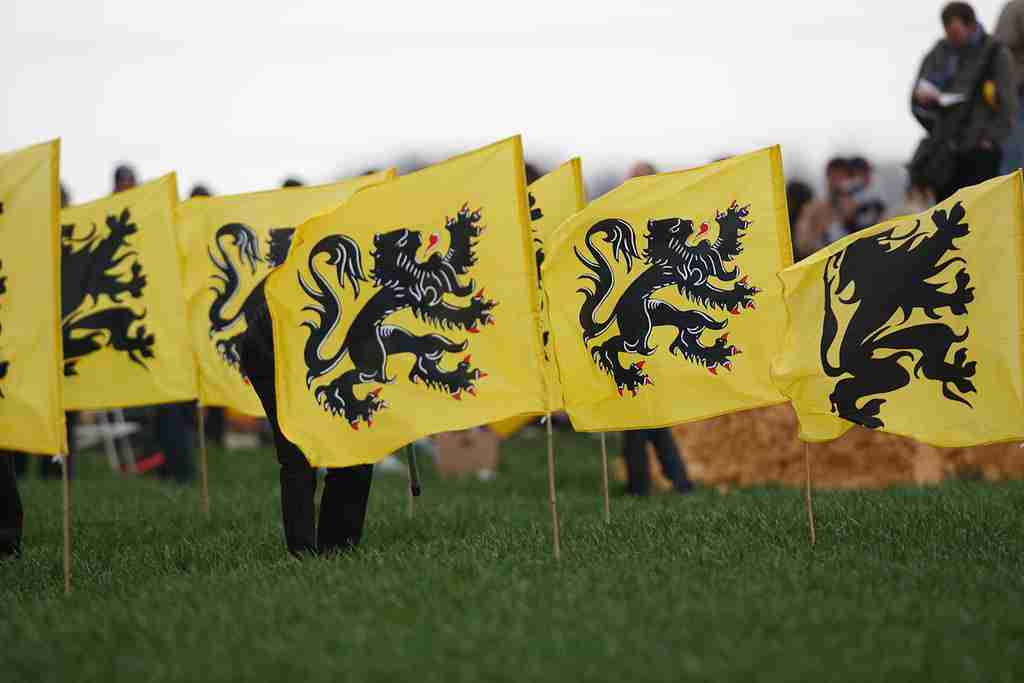
Now the dust has literally settled at the finish of Flanders, the second of Cycling’s five classic one day races, where Mathieu Van Der Poel emphatically won, we thought it’d be great to look at what the 5 biggest classic one day races are, why they are classified as monuments and cycling’s five biggest classic one day races and how you can ride the hallowed cobbles of the pros too.
Although everyone uses the term “classic”, there is no clear consensus about what constitutes a classic one day cycling race. UCI, the international governing body of cycling, has no mention at all of the term in its rulings. This poses problems to define the characteristics of these races and makes it impossible to make a precise list. Interestingly this year, we noted that the Strade Bianche one day race, was increased in length to try and bolster its credentials, although it is still not considered a monument, we would consider it a major one day cycling classic!
Several criteria are used to denote the importance of a cycling race: date of creation, historical importance and tradition, commercial importance, location, level of difficulty, level of competition field, etc. One of the few objective criteria is the official categorization of races as classified by the UCI, although this is not a defining feature either, as some older races are not included in the UCI World Tour.
Here are the five oldest, longest and most prestigious classic one-day races in professional cycling. These are currently the only ones grouped together under the heading ‘Monuments’.
Milan-San Remo,
Tour of Flanders,
Paris-Roubaix,
Liège-Bastogne-Liège,
Il Lombardia
All are rich in heritage and are the races that every pro-rider wants to have in their ‘palmares’. Only the Grand Tours – the Giro d’Italia, Tour de France and Vuelta a España – command as much status.
Each of the five races are characterful in their own way, these characteristics mark them out among the long list of professional races that take place every year. Such are their significance, that riders will tend to target them specifically, making one or more, their main aim for the season – riders like Wout van Aert, Julian Alaphilippe, Mathieu van der Poel and Tadej Pogačar.
All five are part of the UCI’s top-tier WorldTour race calendar, and as such they command a full field of the biggest teams and leading riders.
For cycling fans, these classic one day races are the most highly anticipated of the year: always entertaining and action-packed, where the pros battle it out and the racing is hard! So when was the name ‘Monument’ first coined? On 17 April 1949, at the day of 47th Paris–Roubaix race edition, the term monument appeared for the first time in road cycling sport. French sports journalist Albert Baker d’Isy, specialised in cycling, published an article titled Paris–Rubaix: “monument” du cyclisme in the French newspaper Ce soir.
 MILAN-SAN REMO
MILAN-SAN REMO
Country: Italy
Date: Saturday, 16 March 2024
Length: 296km
First edition: 1907
Also known as: La Primavera, The Spring Classic
Milan–San Remo – the first major classic one day race of the year, its Italian name is La Primavera (the spring), because it is held in late March, or “La Classicissima”. First run in 1907, it is considered the sprinter’s classic.
Rider with most wins: Eddy Merckx (seven wins)
As the first Monument of the season, Milan-San Remo always generates a huge amount of interest and excitement. The route is long, (299 km (190 mi)) and mostly flat along the Ligurian coast. It does not feature the relentless hills and/or cobbled sections of other Monuments, which often leads to the race being contested by a bunch sprint.
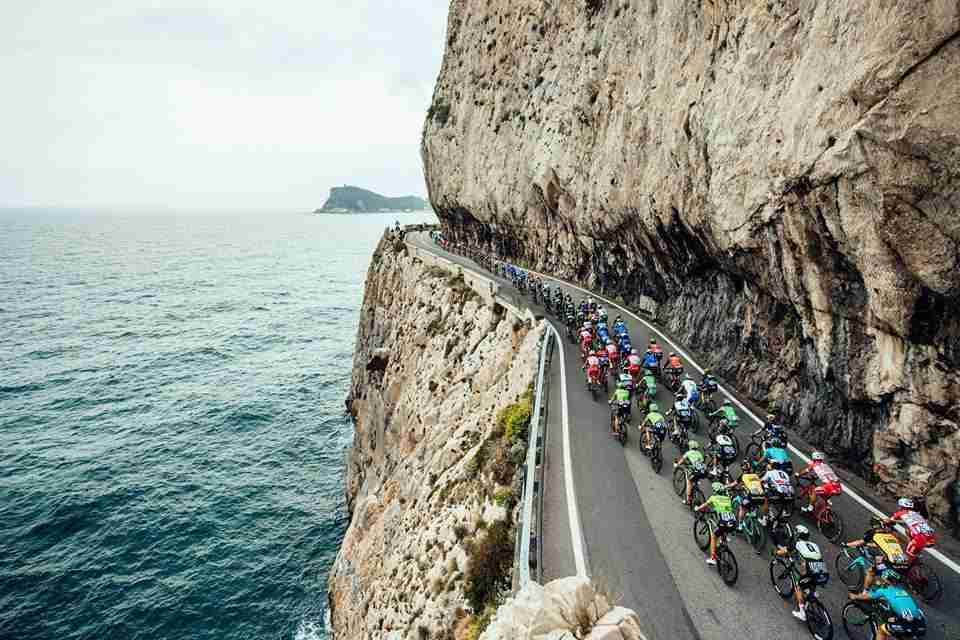
However, the twin climbs of the Cipressa and Poggio in the finale 30 kilometers of the race often serve to split the peloton, and drop those with tired legs. A daring attack by a rider on the Poggio within the last six kilometres of the race is what spectators want to see – even more so if it succeeds.
Granfondo Milan-San Remo
The amateur sportive event is held a few months later in June. This year the Granfondo is Sunday, 9 June 2024.
The Granfondo traces the same classic one day race route tackled by the pros., making it the longest amateur cycling event in the world, with a distance of about 296 km from the gates of Milan, This year’s sportive marks the 54th edition of the event. Riders will journey from the outskirts of Milan, across the Lombardy and Piedmont Plains, to the ascent of the Turchino, before arriving at the Ligurian Riviera, along the coast of the Ligurian sea, and on to the finish line in San Remo.
In order to finish, you will have to conquer the two most daunting climbs of the Cipressa – a brutal 5.6km climb with 226m of ascent at 4.1% – and the Poggio di San Remo – a 3.7km climb at 3.7%, with grim gradients of up to 8%.
Finishing this spectacular course will elevate you into a whole new class of cyclist.
 TOUR OF FLANDERS
TOUR OF FLANDERS
Country: Belgium
Date: Sunday, March 31st 2024
Length: 263.7km
First edition: 1913
Also known as: De Ronde, Ronde van Vlaanderen
Rider with most wins: This year, the world champion and Alpecin-Deceuninck leader van der Poel solo’d for the last hour of the race. It’s Van der Poel’s third win at the Tour of Flanders, tying six others for the most wins in this classic cycling race’s history, Tom Boonen, Fabian Cancellara, Johan Museeuw, Achiel Buysse, Fiorenzo Magni, Eric Leman (all with three wins)
This is the first of the Cobbled classic one day race. It is raced every first Sunday of April. It was first held in 1913, making it the youngest of the five Monuments. A women’s edition was also launched in 2004,
The course changes slightly every year: since 2017 the race has started in Antwerp and since 2012 has finished in Oudenaarde.
Although it is still over a hundred years old, the Tour of Flanders is the youngest of the five Monuments and classic one day cycling race. Its route is one of the toughest: a series of short, sharp hills and cobbled sections constantly whittling down the peloton and this helps to form attacks, breaks and splits. The race is hard, however the cobbles are not as brutal as those of northern France. Riders jostle for position before the base of each climb, and then use pure strength to make it out of the top in the lead – only to do it all again shortly afterwards.
Watching the race unfold is captivating, consistently delivering thrilling drama and crowning a deserving winner.
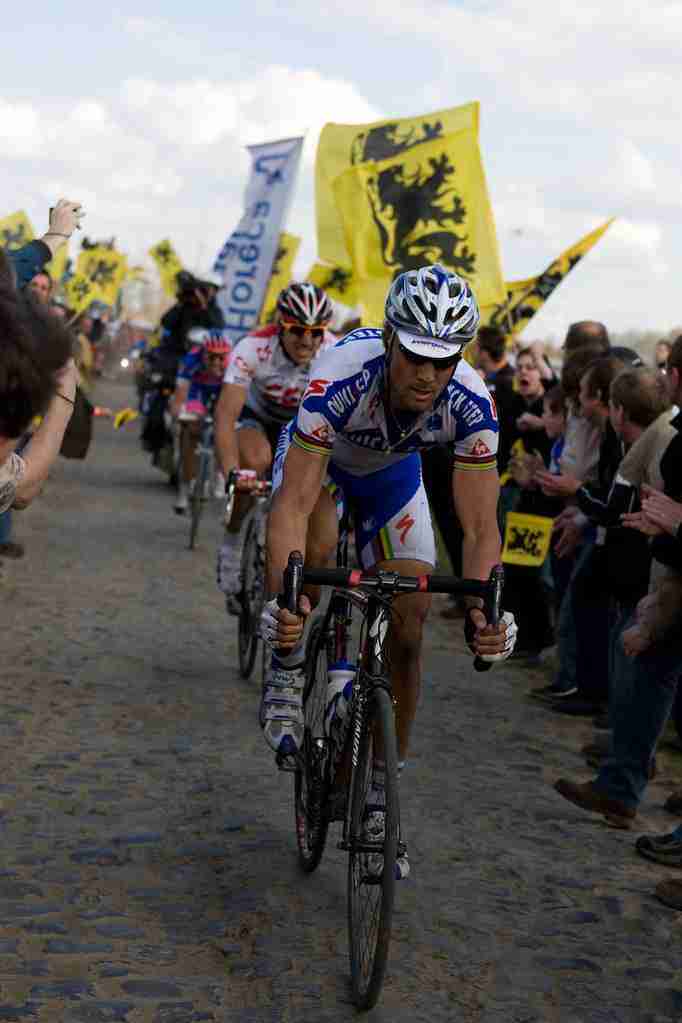
Tour of Flanders Sportive
The day before the pro race, this year being March 30th, 2024, a huge crowd of 16,000 amateur cyclists test themselves against this famous and historic course. You can choose between a 75km course, with 973m of elevation; a 144km course, with 1,929m of elevation; a 177km course, with 2,338m of elevation; or the full 242km course, with 2,536m of elevation.
The race is notorious for its short, steep climbs, many of which are cobbled, making these gritty climbs even more painful. The climbs here are short, sharp and steep, so the lactate and fatigue will pile up over the course of this extremely challenging route.
The Oude Kwaremont is an agonising 2.2km cobbled climb, covered in uneven cobbles which, when dry are torturous. However, when wet, are hell as they claw at your wheels. The Koppenberg – famous enough to be crowned a national monument – is seriously steep, with stretches of this poorly paved narrow road, which is greasy and rutted, reaching 22% and when wet will undoubtedly, unceremoniously, dismount you. Finally the Paterberg climb has an average gradient of 12% and a maximum of 20%.
With cobbled climbs and country views, this legendary sportive offers a winning combination of brutal riding and beautiful Flemish countryside. The race motto is short and simple: “Hills. Cobbles. Suffer.”
 PARIS-ROUBAIX
PARIS-ROUBAIX
Country: France
Date: Sunday, 7th Apr 2024
Length: 257km
First edition: 1896
Also known as: Hell of the North, Queen of the Classics, La Pascale
Rider with most wins: Roger De Vlaeminck, Tom Boonen (four wins)
A women’s version of the race was launched in 2021, which has been won by England’s Lizzie Deignan (2021) and Italy’s Elisa Longo Borghini (2022). In 2023 rider Alison Jackson of EF Education–Tibco–SVB won in a sprint finish, after the break stayed away from the chasing peloton behind.
Paris-Roubaix, the 3rd classic one day race classified as a ‘monument’, is arguably the biggest bike race outside the Tour de France, and has a timeless appeal. Why? It’s a very hard race and one that has earned itself the title ‘Hell of the North’.
It is raced traditionally one week after the Tour of Flanders and is the last of the cobbled races. It is considered by many to be the most heroic one day cycling event of the year. The race finishes on the iconic Roubaix Velodrome. The sectors of rough, cobbled roads are what make the race and it requires nerves of steel and a tough physique to survive the incessant pounding from the surface.
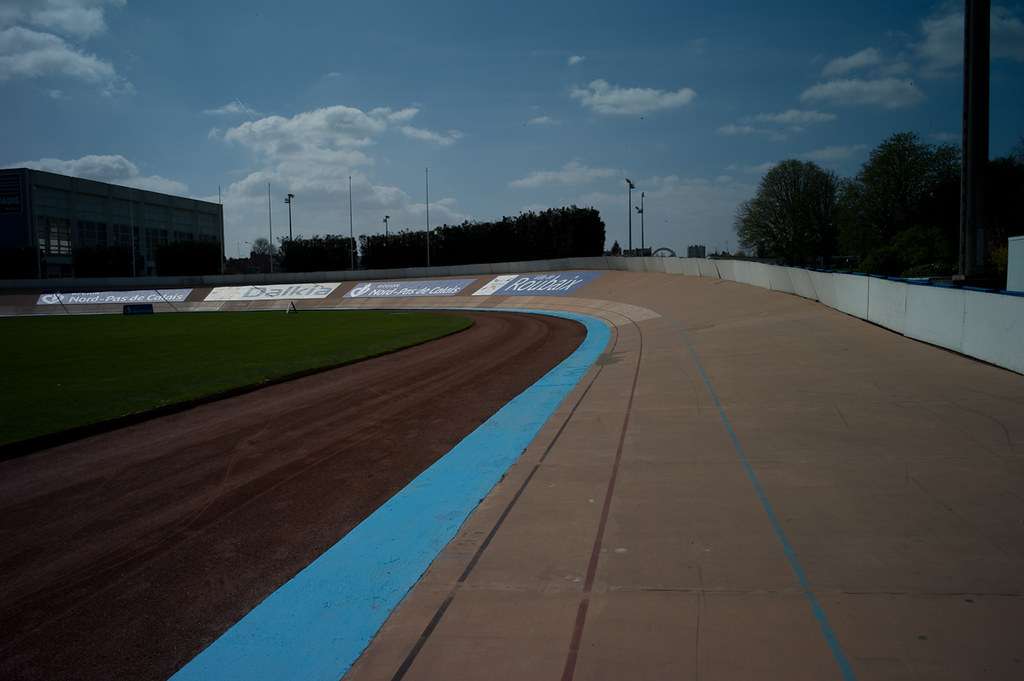
No matter the weather, there’s always a challenge: rain makes the cobbles slippery and muddy; dry weather makes them choking and dusty. The race finishes in the Roubaix velodrome, where a front group of riders is often forced to sprint for the victory as they loop the track usually covered in dirt and mud in what is considered one of the most brutal tests of mental and physical endurance in all of cycling.. There’s simply no race like it.
Paris-Roubaix Challenge
April 6th, 2024
Most sensible amateur riders wouldn’t go near this challenge but as you are reading this, I am guessing you are no normal cyclist.
The bone-shaking cobbles of northern France, have earned the notorious Paris-Roubaix race the nickname of ‘the Hell of the North.’ However, for those who dare contemplate this ride, the Paris-Roubaix Challenge will provide a face full of mud, plenty of saddle sores and very sore hands – and special memories to last a lifetime.
Depending on your taste for suffering, you can choose from a 70km route, with eight cobbled sections; a 145km route, with 19 cobbled sections; or the full 170km route, with 30 bruising cobbled sections. This includes the Trouée d’Arenberg, which features 2.3km of cobbles laid in the era of Napoleon I, in the late eighteenth century, and the Carrefour de l’Arbre, a 2.1km section of rutted cobbles which is often regarded as the hardest of all, and really encapsulates the meaning of pain and suffering of the Roubaix race.
All of the different Paris-Roubaix sportive routes finish in the famous Roubaix velodrome, so you can ride all the way into cycling history. Completing this sportive is guaranteed to earn any rider kudos within your cycling club and wider cycling community – and a few battle worn scars.
 LIÈGE-BASTOGNE-LIÈGE
LIÈGE-BASTOGNE-LIÈGE
Country: Belgium
Date: Sunday, April 21st 2024
Length: 259.5km
First edition: 1892
Also known as: La Doyenne
Rider with most wins: Eddy Merckx (five wins)
The climb-filled Liège-Bastogne-Liège is often regarded as the hardest of the spring classic one day races, thanks to its brutal combination of extreme distance (259km) and the total ascent of 4400m. It takes on the leg-sapping ascents of the Ardennes, and is a race that is often contested by climbers and Grand Tour riders as much as Classics riders. It’s also the oldest of the Monuments, having been first run in 1892, fondly known as La Doyenne (“The Old Lady”).
The majority of the race’s climbs are packed into the final 100km, providing a relentless barrage of climbing that barely allows any respite for tired riders. Despite its position as the final spring Classic, it can still be affected by bad weather to add to the riders’ misery.
Eddy Merckx is the most successful rider at Liège-Bastogne-Liège, with five victories, just ahead of Italian Moreno Argentin and Spaniard Alejandro Valverde who have four victories each. The women’s edition was introduced in 2022, and the reigning champion is the French rider Demi Vollering (2023), whilst the men’s champion in 2023 was Remco Evenepoel.
Liege-Bastogne-Liege Challenge
April 20th, 2024
The 2024 edition of the pro race takes place on April 21st, but amateur riders can enjoy the Liege-Bastogne-Liege Challenge sportive the day before. Riders can choose from an 81km course, with 1,445m of climbing; a 155km course, with 2,869m of climbing; and a 255km course, with a huge 4,442m of climbing.
The hilly route winds itself through the Ardennes region of Belgium, beginning and ending in Liege. With long hills, steep ascents and frequent changes of gradient, this is one seriously challenging race. There are some seriously tough climbs including the 2.3km Stockeu at 9.9%; the 3.6km Haute-Levée at 5.7%; the 2km Cote de La Redoute at 8.8%; and the 1.4km Côte de la Roche-aux-Faucons which hits highs of 11%.
Prepare for the sensation of heavy, aching legs, coupled with an incredible feeling of accomplishment.
 IL LOMBARDIA
IL LOMBARDIA
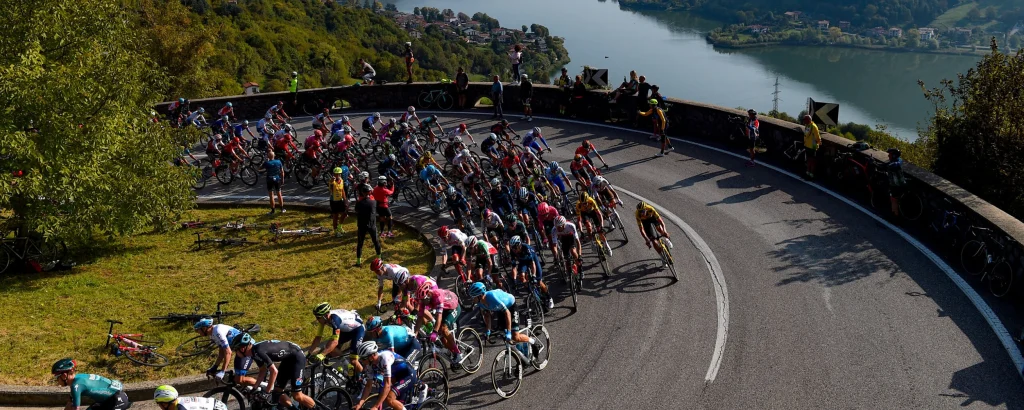
Country: Italy
Date: Saturday, October 12th 2024
Length: 248km
First edition: 1892
Also known as: Giro di Lombardia, Tour of Lombardy, Race of the Falling Leaves
Rider with the most wins: Fausto Coppi (five wins)
This is commonly known as The Autumn Classic or the Race of the Falling Leaves, as it’s held in October or late September. This is the only Monument classic one day race to take place in the autumn rather than spring, Il Lombardia is very different than its northern European cousins. The beautiful route takes riders around Lake Como in a testing war of attrition.
Initially organised as Milano–Milano in 1905, it was called the Giro di Lombardia (Tour of Lombardy) in 1907 and Il Lombardia in 2012. It is notable for its hilly and varied course around Lake Como. It is often won by climbers with a strong sprint finish, because it has a very difficult route, especially near Como or Bergamo, like Madonna del Ghisallo, Civiglio or Valcava. These are longer ascents rather than the power climbs of the Tour of Flanders.
It’s often the final outing for Grand Tour riders seeking to take one final podium before the season ends.
Fausto Coppi won the race 5 times (of which 4 were consecutive wins) and Binda 4 times. Coppi finished solo on every win, following a successful strategy of attacking on the Madonna del Ghisallo and maintaining his lead to the finish in Milan. Gino Bartali was king of the podium with 9 top-3 finishes (3 wins, 4 second places and 2 third places).
The latest to win at Il Lombardia in 2023 was Tadej Pogacar, who became the first rider in 42 years to claim a Tour de France/Giro di Lombardia double as he won the last Monument race of the season.
Granfondo Il Lombardia
The Granfondo Il Lombardia returns on the 8th October. Cyclists will embark on a challenging 109.5-kilometer route which doesn’t quite follow the classic one day pro race however, it has an elevation gain of 1700 meters, starting and finishing in Cantù. The route includes iconic climbs like the Muro di Sormano and the Madonna del Ghisallo, promising a challenging ride.
Here’s are some of the epic climbs that await you, but as this is near the end of the season you should have the legs;
- Muro di Sormano: A grueling 7-kilometer ascent with an average gradient of 15.8%, reaching a jaw-dropping 27% at its steepest point. This climb is a true test of endurance and technique, making it a highlight of the race.
- Madonna del Ghisallo: After a thrilling descent into Nesso, riders face the second climb of the day—the Ghisallo. Although not as steep as the Muro di Sormano, it still presents a challenge with an average slope of 6.2% over 9 kilometers, reaching 14% toward the end. At the summit, cyclists are welcomed by the bells of Madonna del Ghisallo and the famous cycling history museum.
- Finish Line in Cantù: A final descent leads to Merone, allowing riders to catch their breath before the last 20 kilometers of short, steep spurts. The finish line awaits in the heart of Cantù.
With approximately 2,000 participants, this end-of-season Gran Fondo promises unforgettable moments.
No article would be complete without mentioning two more great classic one day cycling races, although not recognised by the UCI as ‘Classics’ or ‘Monuments’, you can ride the routes and follow in your hero’s wheel tracks.
The Amstel Gold Race Sportive
April 13th, 2024
Founded in 1966, the Amstel Gold Race is the only Classic in the Netherlands, and it marks the first of the three Ardennes Classics. The race takes place in the southern Limburg province, and it is characterised by a succession of steep, leg-burning climbs. Previous winners include Belgium’s Eddy Merckx, France’s Bernard Hinault and German Erik Zabel, but the Netherland’s Jan Raas holds the record with five victories. the latest winner, 2023, in a repeat of Flanders was Tadej Pogacar. The women’s edition, which launched in 2001, was most recently won by French rider Demi Vollering (2023).
Amateur riders can take on the same course in a sportive on the Saturday, then watch the world’s best riders battle it out on the Sunday. You can choose from a range of route options, from a short 65km taster route all the way up to the full 240km course, which packs in 2,960m of climbing, brutal!
The main route includes famous ascents like the 7.9% Kruisberg, which has sections at 14.8%; the Fromberg, which hits highs of 8.5%; the Keutenberg, which delivers punchy gradients of 14.7%; the Eyserbosweg, with a high of 17.4%; and the Cauberg, which peaks at a grinding 11.8%. In total, the full course features over 30 short climbs in quick succession as the race progresses. You won’t get much time to catch your breath, but you’ll finally understand what it is like to be a pro.
Finally
Strade Bianche Granfondo

The Strade Bianchi weekend is the first in the season and is something special. It is a celebration of early season cycling on the white gravel roads around historic Siena. The southernmost northern classic has only been in existence since 2007 but it has already established itself as a ‘must see’ and a ‘must do’ event. This year Tadej Pogacar won after an amazing 80km solo ride to the finish in the Piazza del Campo.
In the womens race, world champion Lotte Kopecky dropped Elisa Longo Borghini on the steep climb into Siena to win the Strade Bianche for the second time in her career. Demi Vollering on this occasion beat Kasia Niewiadoma in the sprint for third place.
For the amateur racer there is the epic Granfondo, characterised by an alternation of asphalted and unpaved stretches in the unique landscape of the Crete Senesi. Seven thousand participants challenge each other on the same roads as the Pros.
The Granfondo that covers the same gravel roads tackled by the great champions starts from the Fortezza Medicea (Medici Fortress) and the arrival arch is located in the splendid setting of Piazza del Campo, you can choose between the long 138.5 km route (2250 metres of elevation gain and 10 gravel sections) or the shorter 86.8 km route (1350 metres of elevation gain and 6 gravel sections). Either way the ride is back loaded with some stinging climbs in the final kilometers.
The final kilometre of the day’s action is now very much seen as being one of cycling’s most iconic climbs. At 16% gradient on huge stone slabs, the Via Santa Caterina makes for an unbelievably brutal end to a bike race before the flat finish in the beautiful Piazza del Campo.
If you would like to ride the Strade Bianche next year and enjoy time in the city of Siena on and off the bike, then check out our next trip to Siena in 2025 and register your interest, just fill in the enquiry form and we will get back to you with further details.

Leave a Reply